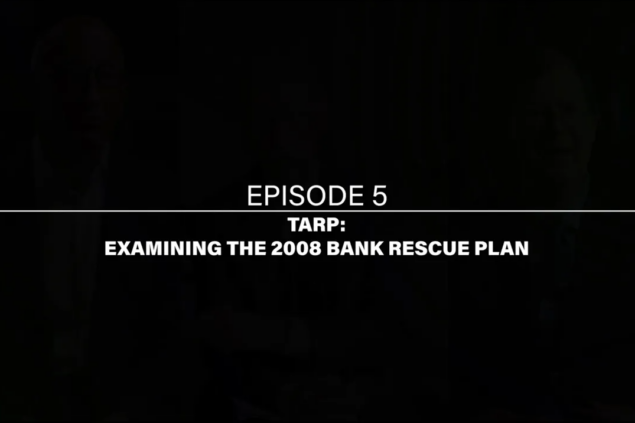HHS Proposal Adds Teeth to Requirements for Retrospective Regulatory Review
J. Kennerly Davis

There is bipartisan agreement that the cost effectiveness of regulation could be greatly improved if regulatory agencies engaged in systematic retrospective analysis of the benefits and costs of the rules and regulations that they have previously enacted. Such analysis could identify for amendment or rescission specific regulatory provisions that have proven to be unnecessarily costly, counterproductive, ineffective, or simply outmoded.
Many rules and regulations are subject to systemic benefit-cost analysis prior to their implementation, but at that point the analysis is shaped by assumptions and projections that are, at least to some extent, unverifiable and controversial. Systematic retrospective regulatory impact analysis could effectively test the validity of the assumptions and projections previously relied upon.
For more than forty years and during every presidential administration, some action has been taken to increase the use of retrospective regulatory analysis. For example, in 1978, President Jimmy Carter issued Executive Order No. 12044, which directed agencies to periodically review their existing regulations to consider whether technology, economic conditions, or other factors have changed in the area affected by the regulation under review. The list of other such actions is extensive, and a brief overview follows.
In 1980, Congress enacted the Regulatory Flexibility Act (the “RFA” or “Act”) to provide regulatory relief to small businesses and other small entities by directing agencies to review the impact of their actions and confirm that the requirements they impose are appropriately proportionate to the size of the entities affected. The RFA impact review requirement covers existing agency regulations as well as new proposals. The Act requires agencies, over a ten-year period, to review all their existing regulations, identify those that have a significant impact on a significant number of small entities and, of those regulations, revise or rescind any that the reviewing agency determines are duplicative, excessively burdensome to small entities, or no longer necessary.
As another example, in 1981, President Ronald Reagan issued Executive Order No. 12291 directing agencies to evaluate their existing regulations in view of cost-benefit principles and potential alternatives. In 1992, President George H.W. Bush issued a Memorandum instructing agencies to conduct a review to evaluate existing regulations to identify and accelerate action on initiatives to eliminate unnecessary regulatory burdens.
In 2011, President Obama issued Executive Order 13563 directing agencies to facilitate the periodic review of existing significant regulations to identify requirements that may be outmoded, ineffective, insufficient, or excessively burdensome, and to modify or repeal them in accordance with what the retrospective analysis has revealed.
Despite these and other initiatives, agencies routinely fail to conduct retrospective regulatory impact analysis. There is widespread agreement that more needs to be done to firmly institutionalize this desirable practice.
On November 4, the Department of Health & Human Services (the “HHS” or Department) issued a notice of proposed rulemaking (the “NPRM”) containing a provision designed to create a significant incentive for the Department to conduct the retrospective review of its existing regulations that is required by the RFA.
Under the proposed rule, any regulation that has been issued by HHS, with certain specified exceptions, will automatically cease to be effective and will “sunset” ten years after the date it was issued, unless the Department has performed the retrospective review of the regulation that is required by the RFA. Currently effective regulations that are more than ten years old will need to be reviewed within two years after the proposed rule is finalized.
In the press release, that accompanied its NPRM, the Department explained that it included the sunset provision because, “It is widely recognized that strong incentives are needed to institutionalize retrospective review. For 40 years, other attempts short of a sunset provision have been largely unsuccessful at getting agencies to perform retrospective reviews.”
Whatever the outcome of the November 4 NPRM, it certainly serves to focus attention on the important subject of regulatory sunsetting. The concept has been discussed for years and, as a concept, it is altogether uncontroversial that the general idea that regulations should be eliminated if they have proven to be unnecessarily costly, counterproductive, ineffective, or outmoded is sensible.
But, as they say, the devil is in the details, the details that must be dealt with when implementing a facially sensible concept like regulatory sunsetting. Providing, as the NPRM does, for the pre-scheduled automatic rescission of an agency’s regulations across the board raises serious implementation issues.
For example, what if an existing regulation is amended after its initial issuance? Does each such amendment restart the ten-year clock for scheduling future rescission? What if the regulation scheduled for rescission is one that retrospective analysis would approve for retention but the agency, for whatever reason, fails to conduct the analysis? What if the entities covered by a regulation scheduled for rescission have expended significant amounts of money to adjust their operations in reliance upon the continued effectiveness of the regulation to be rescinded? And what if the regulation scheduled for rescission is an integral part of a more extensive system of regulation that will remain in effect?
Regulatory sunsetting, at least the form of it proposed in the NPRM, could create real problems. Perhaps that is by design. If the proposed rule is finalized, and the Department performs the retrospective regulatory analysis required by the RFA and called for by a series of executive orders, then it will never have to deal with the problems that may arise from the implementation of its sunsetting mechanism. HHS should be commended for proposing what could be, at last, a truly effective incentive for retrospective regulatory review.
As for sunsetting itself, the NPRM serves usefully to refocus attention on this important subject and the exacting work that needs to be done to fully transform the promising concept into a detailed and truly effective mechanism for the continued improvement of our regulatory system.

Topic
The Federalist Society and Regulatory Transparency Project take no position on particular legal or public policy matters. All expressions of opinion are those of the author(s). To join the debate, please email us at [email protected].



